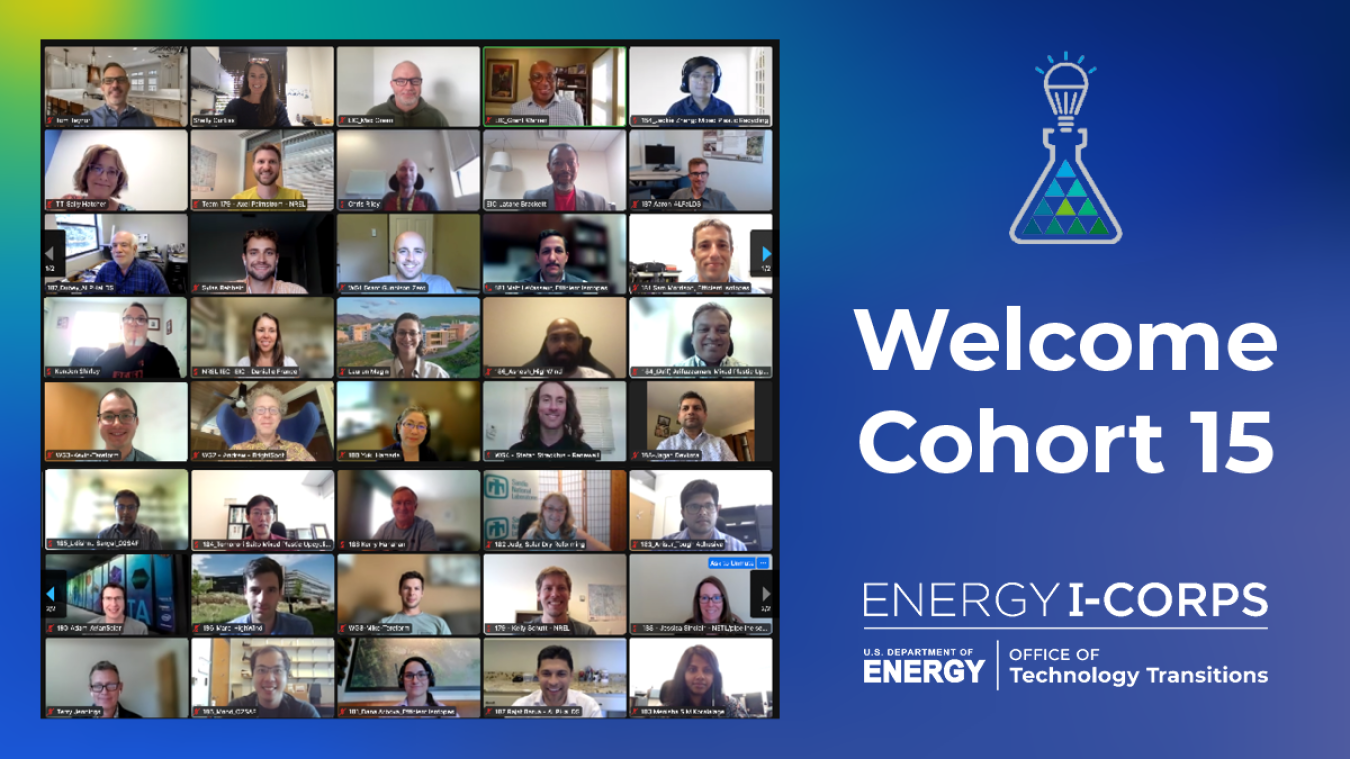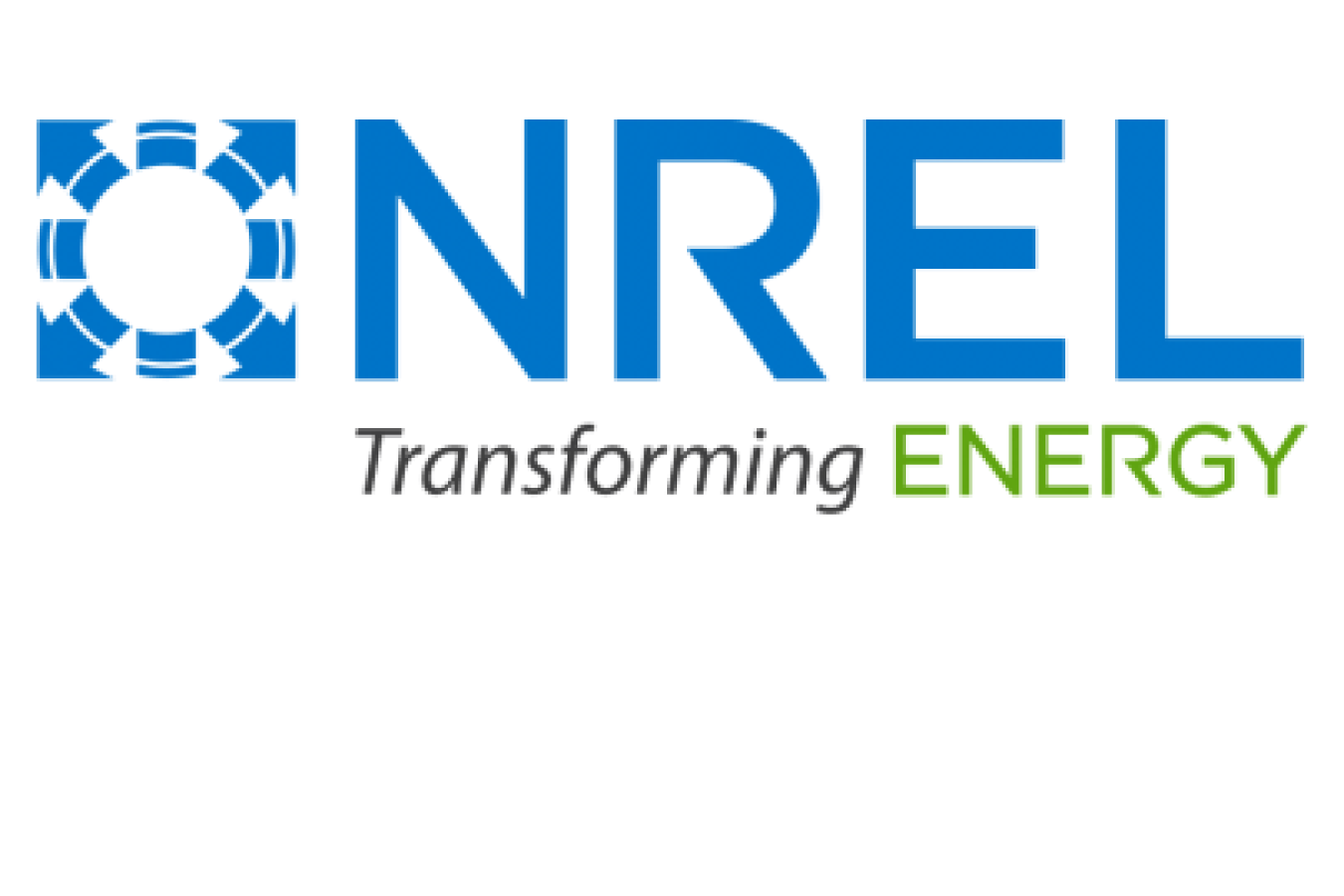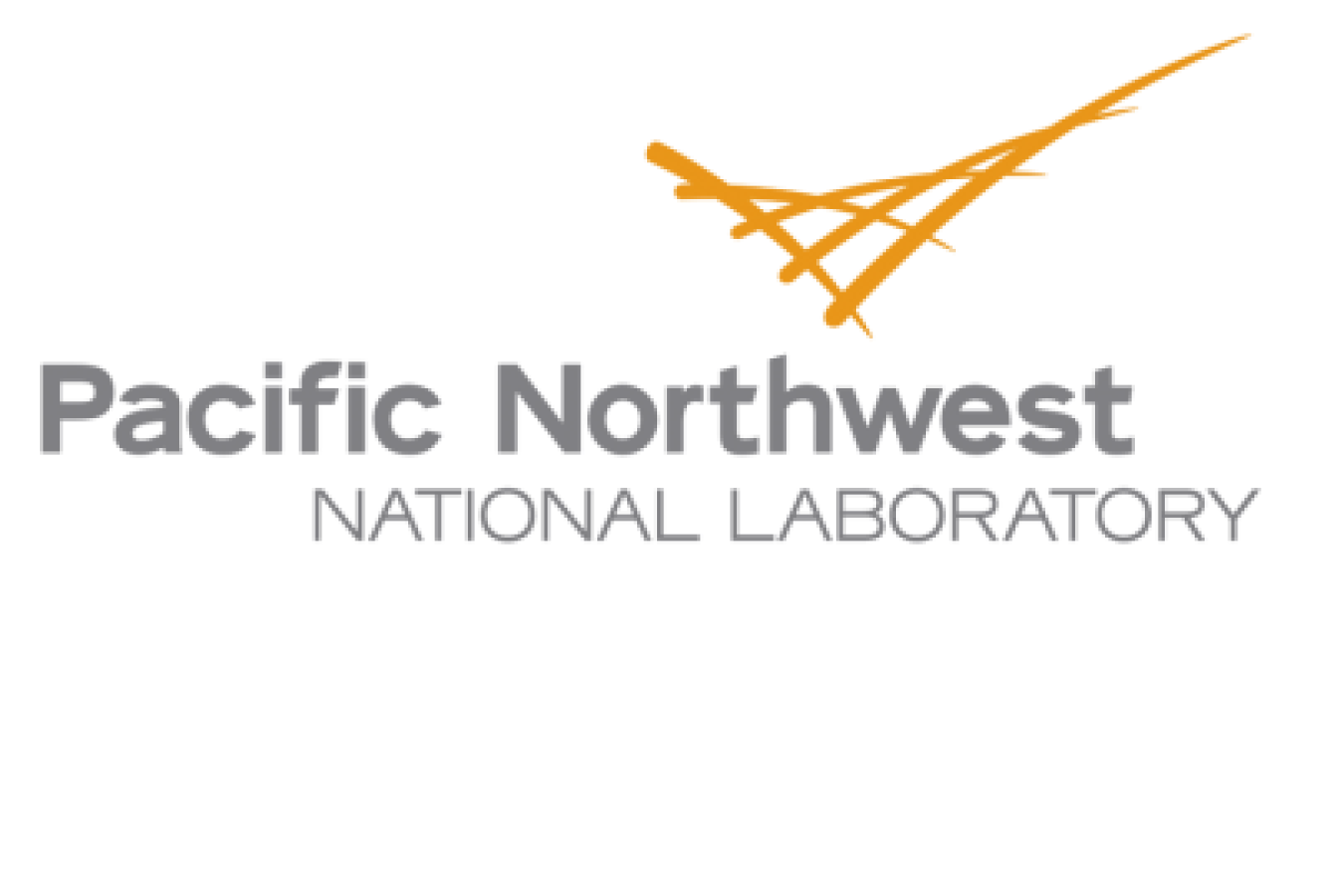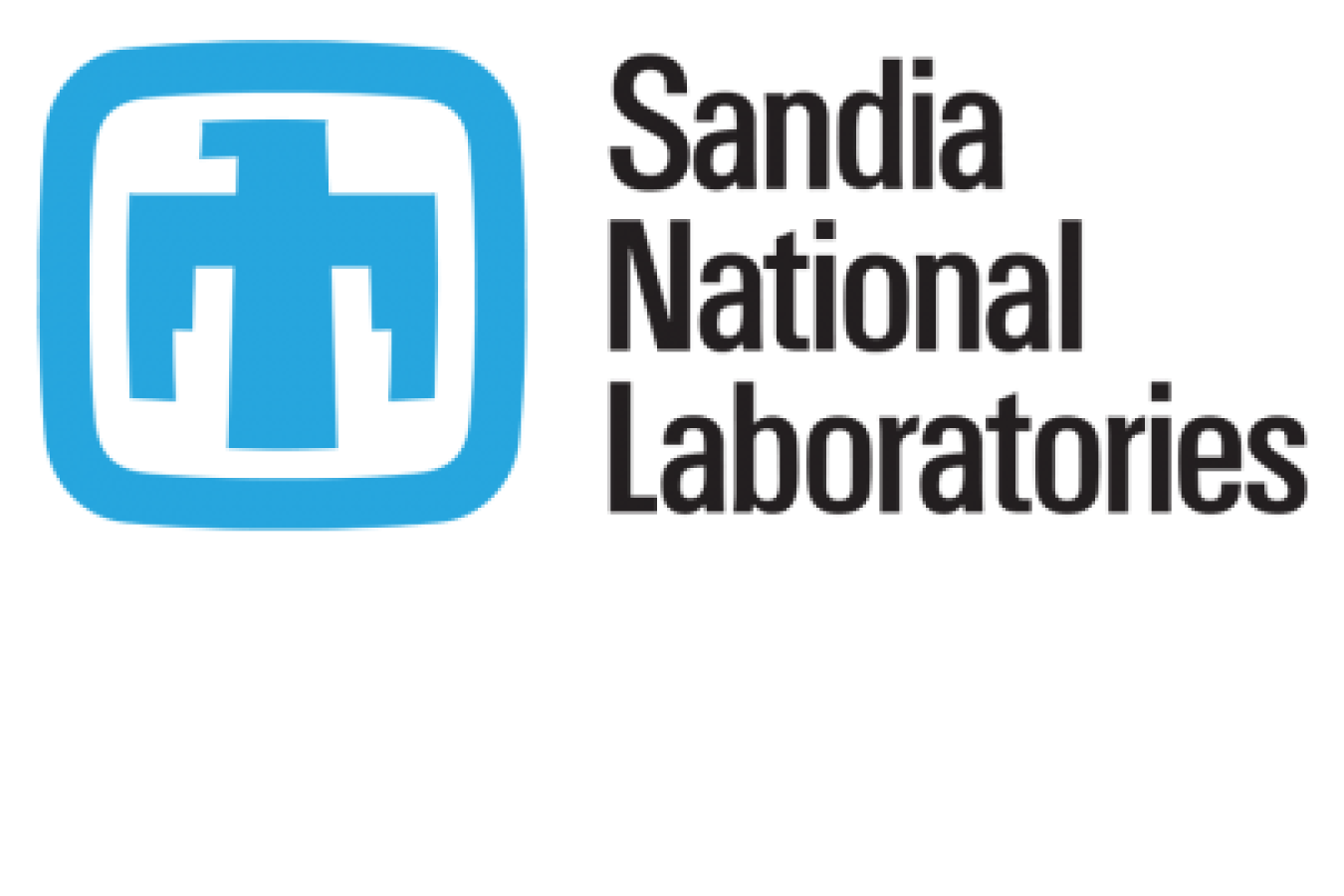The Energy I-Corps program brings together researchers with industry mentors to help discover real-world opportunities for technology as well as impart commercialization and entrepreneurial skills to the teams from the national labs.
Office of Technology Transitions
September 26, 2022Scientists and researchers across the U.S. Department of Energy’s (DOE's) network of National Laboratories continue to come up with brilliant ideas and technologies that can alter a wide range of paradigms. However, this can only happen if they learn how to get the technology out of the lab and into the market quickly and efficiently.

To help researchers with this, DOE's Office of Technology Transitions (OTT) Energy I-Corps program provides a framework for market exploration and stakeholder discovery. This two-month curriculum brings together researchers with industry mentors to discover real-world opportunities for technology as well as impart commercialization expertise and entrepreneurial skills to the teams from the National Labs.
Energy I-Corps teaches participants to define their technology value propositions, interview stakeholders to learn more about viability, and develop realistic market pathways for their technologies.
Each Energy I-Corps cohort represents a wide range of research fields, including hydrogen and fuel cell technologies, bioenergy, waterpower, and more. Since its inception in 2015, Energy I-Corps has graduated more than 175 teams from 12 National Labs, with more than 170 industry mentors providing guidance. To date, the teams have facilitated more than 11,500 customer discovery interviews with companies such as Lowes, Johns Manville, LEGO, the U.S. Army, Tesla, GM, and many more.
Cohort 15 began on Sept. 1, 2022 and includes 14 teams, including the four members of the first cohort for West Gate, the newest Lab-Embedded Entrepreneurship Program (LEEP), a two-year program where participants move to Colorado to work on the National Renewable Energy Laboratory (NREL) campus so they can ready their technologies for the market and grow their startup companies.

The Energy I-Corps cohort 15 participants are:

- APeX Imaging from NREL: Most of the global population cannot afford medical imaging, and doses of ionizing radiation that can cause cancer have doubled in recent decades. Affordable perovskite X-ray (APeX) Imaging can address both problems through a scalable, solution deposition process and novel device electronics.

- AVIAN-SOLAR from Argonne National Laboratory (ANL): An automated camera system uses artificial intelligence to continuously detect and monitor bird activity at solar facilities over an extended period of time to allow for understanding of potential impacts of solar energy facilities on bird populations.

- Efficient Isotopes from Pacific Northwest National Laboratory (PNNL): Traditionally, isotope production involves a multistep process which results in large quantities of waste and low material utilization efficiency. Simultaneous isotope production and purification using a novel micro-scale target design results in reduced waste cost and high material utilization efficiency, lowering costs.

- Solar Dry Reforming from Sandia National Laboratory (SNL): The U.S. currently wastes a huge amount of natural gas deemed impractical to capture and use, so is instead burned onsite. A decentralized system upgrades this under-utilized gas into value-added products through the dry reforming of methane reaction. The reaction converts methane and carbon dioxide into industrially valuable synthesis gas, a mixture of carbon monoxide and hydrogen.

- Tough Adhesive from Oak Ridge National Laboratory (ORNL): Upcycled from a low-cost commodity thermoplastic elastomer commonly used in daily life (toys, household products, etc.), this adhesive is so strong that a thin square centimeter can hold roughly 300 pounds. Also, the enhanced thermal stability up to 400 degrees F makes it attractive for both ambient and high-temperature applications, and it can be applied and detached with heat and pressure as well as reused several times.
- Mixed Plastic Upcycling from ORNL: To tackle the global challenge of plastic recycling, the team developed an extremely efficient organocatalyst that can deconstruct mixed plastic waste such as bottles, packaging, foams, carpet, etc., into valuable chemicals. The technology enables a mixed waste plastic deconstruction in a single batch, eliminating costly sorting.
- O2SAF from PNNL: Syngas is an attractive feed source derived from renewable and waste feedstocks via gasification, while benefiting from existing petrochemical infrastructure. Methanol synthesis followed by methanol-to-olefin (MTO) processing offers an established commercialized pathway to mixed light olefins, primarily ethylene and propylene. This mixture can be directly oligomerized to jet-range products in a single step. Elevating this single operation to industrial scale would complete an end-to-end commercial pathway for producing SAF (Sustainable Aviation Fuel) from syngas.
- HighWind from NREL: The HFM/ExaWind team, spanning multiple institutions, developed a suite of open-source high-fidelity modeling tools capable of enabling the simulation of flows across a range of length scales in the atmosphere. These high-fidelity models can drive innovation in turbine technology.

- ALFa-LDS for Methane from Los Alamos National Laboratory (LANL): Leak detection from the vast natural gas infrastructure is challenging and currently done by slow, sporadic, ineffective, and expensive manual methods. An autonomous machine learning algorithm can analyze continuously collected methane concentration and wind data to locate and quantify leak size in real time.

- Pipeline Sensors from National Energy Technology Laboratory (NETL): Distributed sensor technologies enable safe and secure natural gas transport and delivery pipelines. The sensors detect early-stage leaks and incipient failures in real-time to prevent costly and disruptive incidents.
- ZERO from West Gate: To accelerate the decarbonization of residential buildings, it is necessary to bring a new data collection infrastructure and technology deployment system. Zero Emissions Retrofit Optimization (ZERO) automates scoping and product specifications for home decarbonization and accurately predicts project costs and savings.
- BrightSpot Automation from West Gate: One can’t fix some degradation mechanisms in solar panels and solar cells if you can’t see the problems. UV Fluorescence testing equipment and automated machine learning based analysis of the images allows for contactless analysis of PV systems to complement the industry standard of optical and thermal IR analysis.
- Tereform from West Gate: Less than 1 percent of material used to produce clothing is recycled back into new clothing. Tereform’s technology is a process to depolymerize polyesters, the main plastic used in synthetic textiles, producing small-molecule products with the same chemical structure as the starting materials used in petroleum-derived polyester synthesis, enabling full recyclability.
- Renewell Energy from West Gate: By converting inactive oil and gas wells into gravity energy storage sites, it creates a massive opportunity for storage of energy in the form of potential energy. First, Renewell seals the well, stopping the leak of methane into the atmosphere, then uses the surrounding pre-existing infrastructure and the fact that the average well is nearly a mile deep to store gravity-created energy.
Energy I-Corps always offers a team of gifted teachers to help participants discover potential opportunities in the market for their technologies. The expertise of the instructors combines with their ability to ask key questions and point out challenges, while finding the best way forward. The teaching team for cohort 15 includes:
- Latane Brackett, Principal Manager, Innovation Programs, GEM i4
- Max Green, Founder and Managing Member, Ratio Flux
- Sally Hatcher, Managing Partner, Buff Gold Ventures
- Tom Teynor, CEO, Bell Plumbing & Heating
- Grant Warner, Director of Innovation, College of Engineering & Architecture at Howard University

Since it started in 2015, more than a dozen Energy I-Corps teams have successfully launched new businesses basked on technology they grew through the program. Furthermore, all teams keep raising post-program funding, surpassing more than $110 million in 2022. These teams aim to change the world and Energy I-Corps wants to help make that happen.

